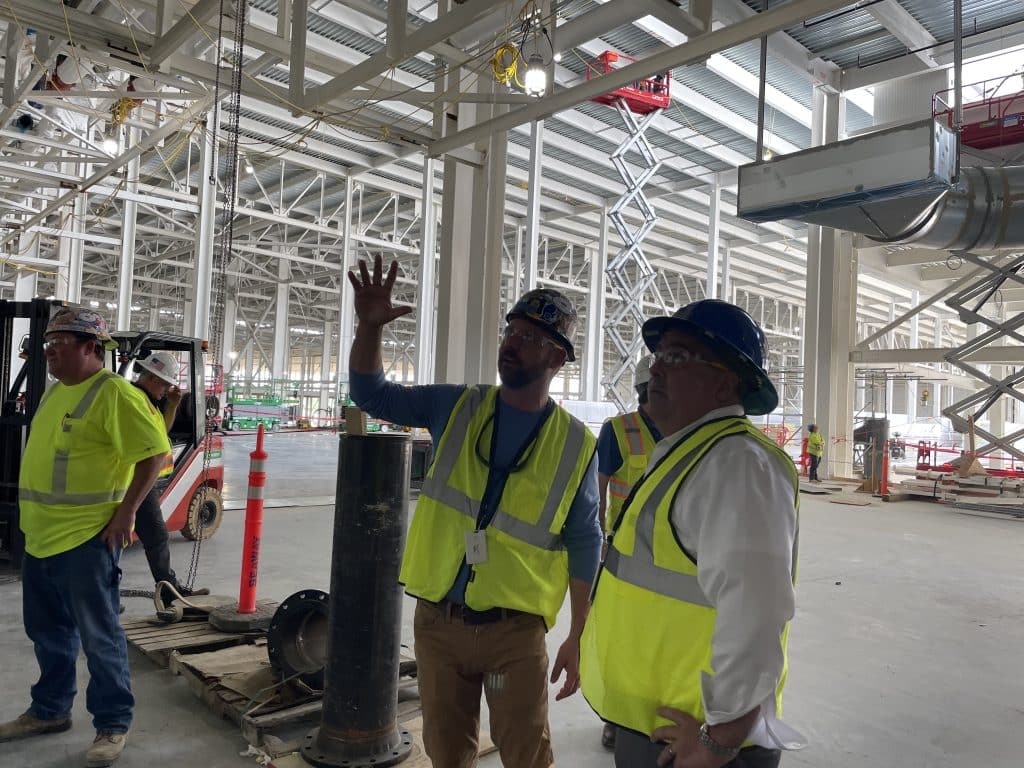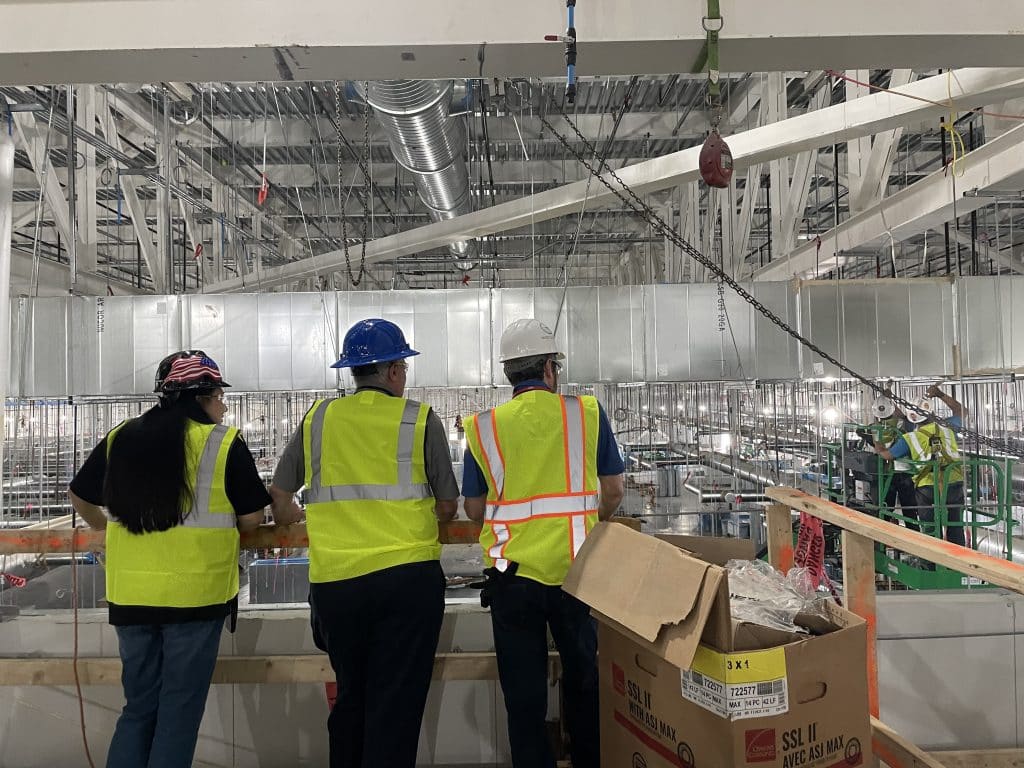“We’re seeing growth like we’ve never seen before,” said SMART Director of Organizing Jason Benson during a recent interview.
In more than 25 years of union membership, Benson couldn’t have dreamed of experiencing anything quite like the last five years. Domestic infrastructure investments and an explosion of megaprojects — thanks in large part to the labor-friendly laws and policies proffered by the Biden administration, plus corresponding governance in Canada — brought tens of thousands of new members into our union, he explained. Strong labor standards tied to megaprojects, particularly those in areas without a readily available supply of sheet metal workers, spurred local unions to organize, recruit and blitz at a frenzied place; some unions, like Local 110 in Kentucky, nearly doubled in size.
Now, Benson said, we need to stick to our core principles to maintain our momentum.
“We’ve seen tremendous growth,” Benson said. “I mean, it’s been referred to as generational growth. Nobody knows when we’ll have this opportunity again. So we want to take advantage of every opportunity that’s out there right now.”
Our path through uncertainty
A great deal of SMART’s recent organizing growth in the United States can be traced to the pro-union — and pro-organizing — policymaking of the Biden administration. Three signature laws, the Bipartisan Infrastructure Law, Inflation Reduction Act and CHIPS Act, invested heavily in our industries, with strong labor standards putting SMART members on resulting projects. A pro-worker National Labor Relations Board took steps to help unions like SMART organize, including issuing a memo banning captive audience meetings. And a new emphasis on indoor air quality, both at the federal government and in the private sector, put SMART production and sheet metal workers in high demand.


But we are now entering a period of uncertainty, Benson noted. Already we’ve seen federal decisions that prevent the NLRB from functioning property; the Department of Defense has halted project labor agreements on its construction work; funding streams related to the Inflation Reduction Act have come under threat; and, outside of the governmental arena, the inevitable end of work on currently ongoing megaprojects means local unions will have dozens — if not hundreds — of members brought in for specific jobs who now need work.
All that means, Benson said, is that our focus on organizing members and contractors is more important than ever.
“That’s where the efforts of maintaining our core work and our local unions [come in], the work that we traditionally have done that has built our union throughout the years, and we want to make sure we’re still capturing every bit of that available,” he said.
“We just have to make sure that we maintain the membership, maintain the work, maintain our contractors to make sure we have all available work hours to put people to work.”
Everybody is an organizer
Crucially, both organizing and retention happens well beyond the local union officer level.
Oftentimes, Benson said, we think of organizing as a task reserved for those with a specific title: organizer, business representative, steward. That couldn’t be farther from the truth: The core of SMART’s identity throughout our history is the principle that every engaged member is an organizer.
“Organizing is the lifeblood of any local union,” he explained, “[and] everybody that’s involved in our organization is an organizer one way or the other. Everybody came to the union through some form of organizing, whether it was a member-to-member relationship, or they saw an advertisement, or they scanned a QR code — or anything like that.”
To that end, an enormous range of options exist for members looking to help organize at their local union. Members can volunteer with the SMART Army and local union committees to conduct outreach. We can volunteer to assist with job actions, whether leafletting, picketing or supporting workers on strike. We can consistently spread the word among family and friends, community groups and churches. Most of all, we can stay engaged at the local union level.
“There’s a lot of things that a rank-and-file member can do to support the organizing,” Benson concluded. “No one gets to the union hall on their own. There’s something that prompted them to do that. And all of that falls under organizing.”
Related News
- Kansas funds passenger rail expansion
- SMART’s General President Defends Our Brother
- Maryland Passes Monumental Transit Safety Bill
- Brother Wirth Crowned Champion in 168-Pound Masters Division Victory
- Chairman Pauli Announces Retirement, SMART-TD celebrates his career
- SMART statement on Supreme Court’s decision regarding Kilmar Armando Abrego Garcia’s return to the United States
- SMART-TD Stands With Brother Kilmar Abrego Garcia
- New Mexico Local 1687 sets new precedent with Red Apple Transit
- Tentative Agreement Reached With TransitAmerica Services (TASI)
- SMART issues Monday, April 7, statement on Kilmar Armando Abrego Garcia’s ongoing case